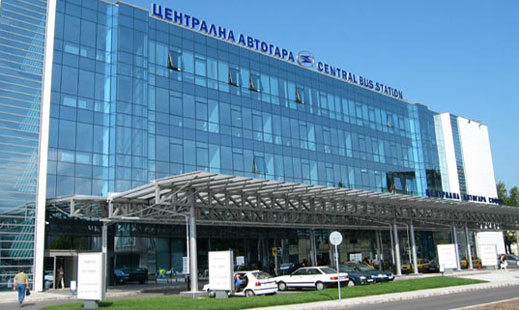In many parts of Bulgaria it is necessary – or easier – to travel by bus, especially in the Rhodopes and Pirin Mountain, where few of the attractions are accessible by train. Each town of any size has a bus station or sometimes two, as buses operated by private companies may use another depot (often just a parking lot); in cities, this duplication can result in three or four terminals. Since the buses run by private companies are usually newer than tend to be more comfortable and faster, particularly if the route follows a highway through the lowlands rather than mountain roads. The drawback is that information on schedules is harder to obtain as few companies post timetables, so that you may have to ask at several kiosks to get the full picture. In some cases the vehicles are minibuses, and leave as soon as they are full with passangers.
Travelling by bus from Sofia to other major Bulgarian towns has become much easier and much more comfortable since the New Central Bus Station has been opened several years ago. It offers different modern facilities and timetables are available in English.
Tickets
As a general rule, tickets are sold until five minutes before departure, although it is advisable to buy them an hour or two in advance if traveling on a routeserving major towns – especially during summer, on National Holidays or at weekends. Note that if you are catching a bus that originates elsewhere, tickets are only sold when the bus arrives, in which case you need to queue outside the shuttered ticket hatch. On rural routes, tickets are often sold by the driver rather than at the terminal.
City buses
On urban transport – trams and buses in Sofia, buses and trolleybuses everywhere else – there is usually a flat fare (seldom more than 80 Euro cents) on all routes. In Sofia, tickets are bought beforehand and then punched in a machine on board, so it is sensible to buy a bunch of ten tickets (from street kiosks next to tram and bus stops) as soon as you arrive. Fare dodgers pay a spot fine. Elsewhere in Bulgaria, tickets are sold by an on-board conductor. Routes are sometimes displayed on each bus stop (spirka) together with the times of the first and last services, but many of these signs are so old that it is best to check with the locals before jumping aboard. In some regions, private companies operate, so on a few routes you will encounter a plethora of different coloured buses and minibuses, identifiable only by a scribbed route number posted in the windscreen. For them you buy the ticket when you get aboard.
International buses
For the last ten years in Bulgaria, a plethora of international bus services has sprung up, connecting Bulgaria’s main towns and cities with neighbouring countries and further afield. The main point of departure is Sofia – whence you can reach any country in Southern and Central Europe – but there are also several regional towns where you can pick up a bus to Turkey, Greece, Albania, Italy, Macedonia, etc. Many of the companies running buses to Turkey are Turkish; but there are now many Bulgarian operators too. Tickets are usually priced in leva or euro.
Central bus station in Sofia
100, Kniaginia Maria Luisa Blvd.
Tel: (+359) 900 21 000 (24 hour information)
Fax: (+359 2) 813 31 44
The new bus-station is constructed as an entire modern transport complex, considered with the modern requirements of similar public projects construction. The covered area is 7 173 sq. m. The building is air-conditioned. The Municipality of Sofia takes care for its security day and night and has also assembled 130 cameras.
The basement is supplied with technical equipment, sanitary knots, an automatic telephone exchange, engine room for the elevators. Though the basement hot connection is provided to the rotunda and the platforms of Central Railway Station.
At the ground floor the waiting rooms are situated on 1500 sq. m. total area, and 57 ticket desks and offices as well. Payments can be done in cash, by using debit and credit cards as well. There is a pharmacy, children room and medical station, special equipment for disabled people. The travellers get current information from a server in the control centre, which is continuously providing data about arrivals and departures of buses to the control panel. Between 47 - 50 buses leave the bus-station at the same time starting to international routes or domestic lines from 50 bus-sectors. Eight shops, a bank office, restaurants and cafes are situated at the first floor.


